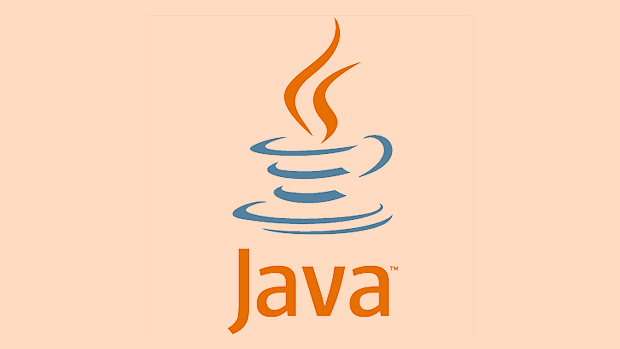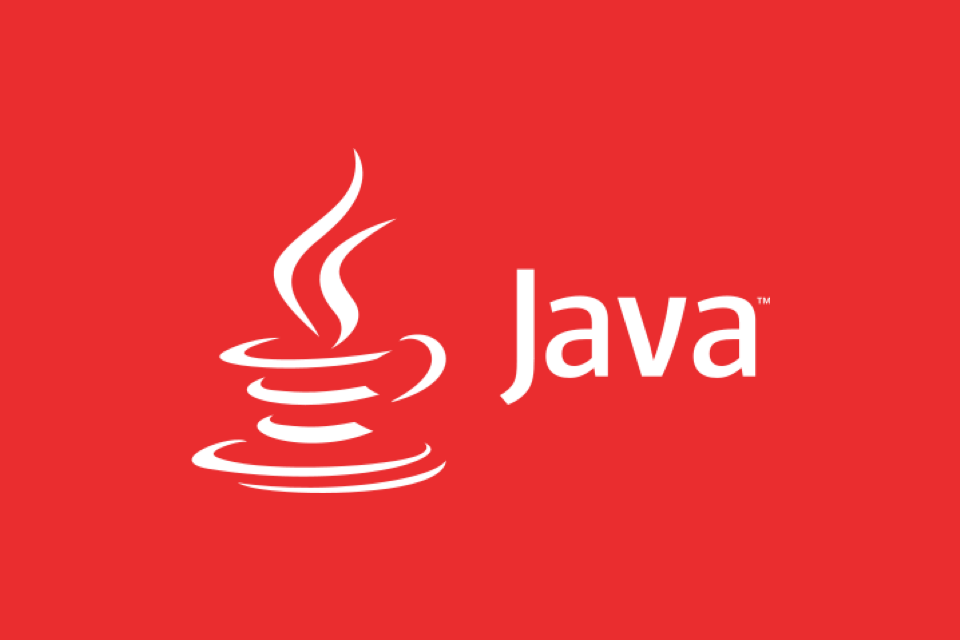Java坚持JPA和Hibernate:一个完整的教程
JPA 是 Java Persistence API 的缩写,是一种用于将 Java 对象映射到数据库表的标准规范,而 Hibernate 是其最流行的实现之一,提供了对象关系映射(ORM)功能,能够简化数据库操作。1. JPA 定义了实体映射和 CRUD 操作的标准,使开发者可以使用面向对象的方式操作数据库,避免编写大量 JDBC 代码。2. Hibernate 作为 JPA 的实现,不仅支持 JPA 规范,还提供缓存、懒加载、事务管理等高级特性。3. 使用 Maven 添加 hibernate-core 和数据库驱动(如 H2)依赖,并在 src/main/resources/META-INF/persistence.xml 中配置数据库连接和 Hibernate 属性,如 hbm2ddl.auto 控制表结构的生成策略。4. 通过 @Entity、@Table、@Id、@GeneratedValue、@Column 等注解定义实体类与数据库表的映射关系。5. 使用 EntityManager 进行 CRUD 操作,所有操作需在事务中进行,persist() 保存新实体,merge() 更新已有实体,find() 根据主键查询,remove() 删除实体。6. 支持实体间关系映射,如 @OneToMany 和 @ManyToOne 实现一对多关联,并通过 cascade 配置级联操作,确保关联数据同步保存或删除。7. 最佳实践包括:及时关闭 EntityManager 和 EntityManagerFactory 防止内存泄漏,重写 equals() 和 hashCode() 方法,优先使用 FetchType.LAZY 避免性能问题,使用 DTO 而非实体类暴露 API,避免 LazyInitializationException。8. 在 Spring Boot 项目中,推荐使用 Spring Data JPA,通过继承 JpaRepository 接口自动获得 CRUD 功能,由 Spring 管理配置、事务和依赖注入。9. 可通过 JPQL 查询如 SELECT u FROM User u LEFT JOIN FETCH u.posts 预加载关联数据,避免懒加载异常。10. 实际开发中应从小功能开始,逐步增加实体、关系和查询,结合实践深入掌握 JPA 与 Hibernate 的使用。你现在已经掌握了 JPA 和 Hibernate 的核心知识,能够构建高效的数据持久化 Java 应用。

Java Persistence with JPA and Hibernate is a go-to combination for managing relational data in Java applications. Whether you're building a Spring Boot app or a standalone Java project, understanding how to persist data effectively is essential. This tutorial walks you through the fundamentals of JPA (Java Persistence API) and Hibernate — one of its most popular implementations — with practical examples and best practices.

What Is JPA and Why Use Hibernate?
JPA (Java Persistence API) is a specification, not a concrete implementation. It defines how Java objects can be mapped to database tables, and how to perform CRUD (Create, Read, Update, Delete) operations using object-oriented syntax instead of raw SQL.
Hibernate is a full-featured, open-source ORM (Object-Relational Mapping) framework that implements the JPA specification. It adds extra features beyond JPA and handles the heavy lifting of translating Java objects to database records and vice versa.

✅ Why use them together?
- Write less boilerplate JDBC code
- Work with Java objects instead of SQL queries
- Leverage annotations for easy mapping
- Support for advanced features like caching, lazy loading, and transactions
Setting Up JPA with Hibernate
To get started, you’ll need the right dependencies. Here’s how to set it up in a Maven project:

<dependencies>
<dependency>
<groupId>org.hibernate</groupId>
<artifactId>hibernate-core</artifactId>
<version>6.4.4.Final</version>
</dependency>
<dependency>
<groupId>com.h2database</groupId>
<artifactId>h2</artifactId>
<version>2.2.224</version>
</dependency>
</dependencies>We’re using H2 as an in-memory database for simplicity, but Hibernate supports MySQL, PostgreSQL, Oracle, and more.
Next, create a persistence.xml file in src/main/resources/META-INF/:
<?xml version="1.0" encoding="UTF-8"?>
<persistence xmlns="http://xmlns.jcp.org/xml/ns/persistence" version="3.0">
<persistence-unit name="my-persistence-unit">
<properties>
<property name="javax.persistence.jdbc.driver" value="org.h2.Driver"/>
<property name="javax.persistence.jdbc.url" value="jdbc:h2:mem:testdb"/>
<property name="javax.persistence.jdbc.user" value="sa"/>
<property name="javax.persistence.jdbc.password" value=""/>
<property name="hibernate.dialect" value="org.hibernate.dialect.H2Dialect"/>
<property name="hibernate.hbm2ddl.auto" value="update"/>
<property name="hibernate.show_sql" value="true"/>
</properties>
</persistence-unit>
</persistence>Key property:
hibernate.hbm2ddl.auto:updateautomatically creates or updates tables based on your entity classes. Usenone,validate, orcreate-dropin production as needed.
Creating Your First Entity
An entity is a Java class mapped to a database table. Use JPA annotations to define the mapping.
import jakarta.persistence.*;
@Entity
@Table(name = "users")
public class User {
@Id
@GeneratedValue(strategy = GenerationType.IDENTITY)
private Long id;
@Column(nullable = false)
private String name;
@Column(unique = true)
private String email;
// Constructors
public User() {}
public User(String name, String email) {
this.name = name;
this.email = email;
}
// Getters and setters
public Long getId() { return id; }
public void setId(Long id) { this.id = id; }
public String getName() { return name; }
public void setName(String name) { this.name = name; }
public String getEmail() { return email; }
public void setEmail(String email) { this.email = email; }
@Override
public String toString() {
return "User{"
"id=" id
", name='" name '\''
", email='" email '\''
'}';
}
}Annotations explained:
@Entity: Marks the class as a JPA entity.@Table: Optional; customizes the table name.@Id: Specifies the primary key.@GeneratedValue: Tells Hibernate to auto-generate the ID.@Column: Customize column definition (nullability, uniqueness, etc.).
Performing CRUD Operations
Use EntityManager to interact with the persistence context.
import jakarta.persistence.EntityManager;
import jakarta.persistence.EntityManagerFactory;
import jakarta.persistence.Persistence;
public class Main {
public static void main(String[] args) {
EntityManagerFactory emf = Persistence.createEntityManagerFactory("my-persistence-unit");
EntityManager em = emf.createEntityManager();
// Create
em.getTransaction().begin();
User user = new User("Alice", "alice@example.com");
em.persist(user);
em.getTransaction().commit();
// Read
User found = em.find(User.class, 1L);
System.out.println("Found: " found);
// Update
em.getTransaction().begin();
found.setName("Alicia");
em.merge(found);
em.getTransaction().commit();
// Delete
em.getTransaction().begin();
em.remove(found);
em.getTransaction().commit();
em.close();
emf.close();
}
}? Note:
- Always wrap database operations in transactions.
persist()saves a new entity;merge()updates a detached one.find()retrieves an entity by ID.
Relationships: One-to-Many Example
Most real-world apps involve relationships. Let’s add Post entities linked to User.
@Entity
public class Post {
@Id
@GeneratedValue(strategy = GenerationType.IDENTITY)
private Long id;
private String title;
@ManyToOne
@JoinColumn(name = "user_id")
private User user;
// constructors, getters, setters...
}Now, a User can have multiple posts:
@OneToMany(mappedBy = "user", cascade = CascadeType.ALL, orphanRemoval = true) private List<Post> posts = new ArrayList<>();
When you save a user with posts (and cascade is enabled), Hibernate saves the posts automatically.
User user = new User("Bob", "bob@example.com");
Post post1 = new Post("First Post");
Post post2 = new Post("Second Post");
post1.setUser(user);
post2.setUser(user);
user.getPosts().add(post1);
user.getPosts().add(post2);
em.getTransaction().begin();
em.persist(user);
em.getTransaction().commit();This creates the user and both posts in a single transaction.
Best Practices and Common Pitfalls
Here are key tips to avoid common issues:
- Always close EntityManager and EntityManagerFactory to prevent memory leaks.
- Use
equals()andhashCode()in entities — especially when using collections. - Avoid FetchType.EAGER by default; prefer
FetchType.LAZYto prevent loading unnecessary data. - Don’t expose entities directly in APIs — use DTOs (Data Transfer Objects) instead.
- Be cautious with
cascade = CascadeType.ALL— it can accidentally delete related data. - Initialize lazy collections inside the transaction (before closing
EntityManager), or useJOIN FETCHin queries.
Example of a JPQL query to fetch user with posts:
String jpql = "SELECT u FROM User u LEFT JOIN FETCH u.posts WHERE u.id = :id";
User user = em.createQuery(jpql, User.class)
.setParameter("id", 1L)
.getSingleResult();This avoids the "LazyInitializationException".
Going Further: Spring Boot Integration
In real projects, especially with Spring Boot, you won’t use EntityManagerFactory directly. Instead:
- Use
Spring Data JPAfor repository abstraction - Annotate your main class with
@SpringBootApplication - Define repositories like:
public interface UserRepository extends JpaRepository<User, Long> {
}Spring handles the rest — configuration, transactions, and dependency injection.
That’s it. You now have a solid foundation in JPA and Hibernate. From defining entities and relationships to performing CRUD and managing transactions, you're ready to build robust data-driven Java applications. The key is practice — try adding more entities, queries, and constraints to deepen your understanding.
Basically, just start small, let Hibernate do the work, and learn as you go.
以上是Java坚持JPA和Hibernate:一个完整的教程的详细内容。更多信息请关注PHP中文网其他相关文章!

热AI工具

Undress AI Tool
免费脱衣服图片

Undresser.AI Undress
人工智能驱动的应用程序,用于创建逼真的裸体照片

AI Clothes Remover
用于从照片中去除衣服的在线人工智能工具。

Stock Market GPT
人工智能驱动投资研究,做出更明智的决策

热门文章

热工具

记事本++7.3.1
好用且免费的代码编辑器

SublimeText3汉化版
中文版,非常好用

禅工作室 13.0.1
功能强大的PHP集成开发环境

Dreamweaver CS6
视觉化网页开发工具

SublimeText3 Mac版
神级代码编辑软件(SublimeText3)
 如何在Java中的类Path中添加JAR文件?
Sep 21, 2025 am 05:09 AM
如何在Java中的类Path中添加JAR文件?
Sep 21, 2025 am 05:09 AM
使用-cp参数可将JAR加入类路径,使JVM能加载其内类与资源,如java-cplibrary.jarcom.example.Main,支持多JAR用分号或冒号分隔,也可通过CLASSPATH环境变量或MANIFEST.MF配置。
 文件夹在哪里找
Sep 20, 2025 am 07:57 AM
文件夹在哪里找
Sep 20, 2025 am 07:57 AM
最直接的方法是回忆保存位置,通常在桌面、文档、下载等文件夹;若找不到,可使用系统搜索功能。文件“失踪”多因保存路径未留意、名称记忆偏差、文件被隐藏或云同步问题。高效管理建议:按项目、时间、类型分类,善用快速访问,定期清理归档,并规范命名。Windows通过文件资源管理器和任务栏搜索查找,macOS则依赖访达和聚焦搜索(Spotlight),后者更智能高效。掌握工具并养成良好习惯是关键。
 如何在Java中创建文件
Sep 21, 2025 am 03:54 AM
如何在Java中创建文件
Sep 21, 2025 am 03:54 AM
UseFile.createNewFile()tocreateafileonlyifitdoesn’texist,avoidingoverwriting;2.PreferFiles.createFile()fromNIO.2formodern,safefilecreationthatfailsifthefileexists;3.UseFileWriterorPrintWriterwhencreatingandimmediatelywritingcontent,withFileWriterover
 了解Java仿制药和通配符
Sep 20, 2025 am 01:58 AM
了解Java仿制药和通配符
Sep 20, 2025 am 01:58 AM
Javagenericsprovidecompile-timetypesafetyandeliminatecastingbyallowingtypeparametersonclasses,interfaces,andmethods;wildcards(?,?extendsType,?superType)handleunknowntypeswithflexibility.1.UseunboundedwildcardwhentypeisirrelevantandonlyreadingasObject
 Google Chrome无法加载此页面
Sep 20, 2025 am 03:51 AM
Google Chrome无法加载此页面
Sep 20, 2025 am 03:51 AM
首先检查网络连接是否正常,若其他网站也无法打开则问题在网络;1.清除浏览器缓存和Cookies,进入Chrome设置选择清除浏览数据;2.关闭扩展程序,可通过无痕模式测试是否因插件冲突导致;3.检查并关闭代理或VPN设置,避免网络连接被拦截;4.重置Chrome网络设置,恢复默认配置;5.更新或重装Chrome至最新版本以解决兼容性问题;6.使用其他浏览器对比测试,确认问题是否仅限Chrome;根据错误提示如ERR_CONNECTION_TIMED_OUT或ERR_SSL_PROTOCOL_ER
 UC浏览器如何强制缩放网页_UC浏览器网页强制缩放功能使用技巧
Sep 24, 2025 pm 04:54 PM
UC浏览器如何强制缩放网页_UC浏览器网页强制缩放功能使用技巧
Sep 24, 2025 pm 04:54 PM
首先启用UC浏览器内置缩放功能,进入设置→浏览设置→字体与排版或页面缩放,选择预设比例或自定义百分比;其次可通过双指张开或捏合手势强制调整页面显示大小;对于限制缩放的网页,可请求桌面版网站以解除限制;高级用户还可通过在地址栏执行JavaScript代码修改viewport属性,实现更灵活的强制缩放效果。
 为什么实时系统需要确定性响应保障?
Sep 22, 2025 pm 04:03 PM
为什么实时系统需要确定性响应保障?
Sep 22, 2025 pm 04:03 PM
实时系统需确定性响应,因正确性依赖结果交付时间;硬实时系统要求严格截止期限,错过将致灾难,软实时则允许偶尔延迟;非确定性因素如调度、中断、缓存、内存管理等影响时序;构建方案包括选用RTOS、WCET分析、资源管理、硬件优化及严格测试。
 如何在Java中获取通话方法的名称?
Sep 24, 2025 am 06:41 AM
如何在Java中获取通话方法的名称?
Sep 24, 2025 am 06:41 AM
答案是使用Thread.currentThread().getStackTrace()获取调用方法名,通过索引2得到调用anotherMethod的someMethod名称,因索引0为getStackTrace、1为当前方法、2为调用者,示例输出“Calledbymethod:someMethod”,也可用Throwable实现,但需注意性能、混淆、安全及内联影响。








